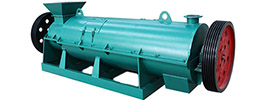In Africa, selecting appropriate fertilizers and adopting correct fertilization methods are crucial for agricultural production. The following is a detailed introduction on how to choose suitable fertilizers and how to fertilize:
I. Selecting Appropriate FertilizersConsidering Soil Characteristics
- Soil Type: Africa has diverse soil types, ranging from sandy soil to clay soil. Sandy soil has poor water and nutrient retention capabilities, requiring water-soluble quick-release fertilizers. Clay soil, on the other hand, has good water and nutrient retention but poor permeability, necessitating fertilizers that can improve soil structure.
- Soil Nutrients: Understand the nutrient status of the soil through soil testing, including major nutrients such as nitrogen, phosphorus, and potassium, as well as micronutrients. Based on the test results, supplement the lacking nutrients.
Considering Crop Needs
- Crop Species: Different crops have varying fertilizer requirements. For example, cereal crops demand more nitrogen fertilizer, while fruit and vegetable crops require higher levels of potassium fertilizer. Therefore, when selecting fertilizers, targeted fertilization should be carried out based on crop species.
- Growth Stages: Crops have different fertilizer requirements at different growth stages. For instance, during the early growth stage, more nitrogen fertilizer is needed to promote plant growth; whereas, during fruit enlargement, more potassium fertilizer is required to improve fruit quality and yield.
Considering Climatic Conditions
- Rainfall and Temperature: Africa has diverse climatic conditions, with rainfall and temperature significantly affecting fertilizer decomposition and crop absorption. In areas with adequate rainfall and high temperatures, easily decomposable organic fertilizers or quick-release chemical fertilizers can be chosen; while in arid, low-temperature areas, long-lasting, slow-release fertilizers are preferred.
Considering Economic Costs
- When selecting fertilizers, economic costs also need to be considered. Organic fertilizers, although comprehensive in nutrients and long-lasting in effect, have higher production and transportation costs. Chemical fertilizers, while high in nutrient content and quick in effect, may lead to soil degradation with long-term heavy use. Therefore, a balance needs to be struck based on local conditions and crop requirements.
II. How to FertilizeDetermining Fertilization Amount
- Determine a reasonable fertilization amount based on factors such as soil test results, crop requirements, and climatic conditions. Avoid excessive fertilization, which leads to nutrient waste and environmental pollution.
Choosing Fertilization Methods
- Base Fertilizer: Fertilizer applied to the soil before crop planting is called base fertilizer. Base fertilizer provides a nutrient foundation for the entire growth period of the crop. When applying base fertilizer, the fertilizer should be thoroughly mixed with the soil to avoid concentration that may cause root burn.
- Top-dressing: During crop growth, top-dressing is carried out based on crop requirements and soil nutrient status. Top-dressing can be done through broadcasting, furrow application, or hole application, placing the fertilizer in the soil or near the crop roots.
- Foliar Fertilization: For certain crops or specific growth stages, foliar fertilization can quickly supplement nutrients. When applying foliar fertilization, select appropriate fertilizer types and concentrations to avoid harm to the crops.
Paying Attention to Fertilization Timing
- Fertilization timing should be determined based on the crop growth cycle and climatic conditions. For example, during the vigorous growth period of the crop, more nutrients are needed, and timely top-dressing should be carried out; while under unfavorable conditions such as drought, high temperatures, or cold, fertilization amount should be appropriately reduced or suitable fertilizer types should be chosen.
Strengthening Field Management
- After fertilization, strengthen field management, including irrigation, drainage, weeding, and pest control. These measures can promote crop absorption and utilization of nutrients, improve fertilizer use efficiency, and enhance crop yield and quality.
In summary, selecting appropriate fertilizers and adopting correct fertilization methods in Africa require comprehensive consideration of soil characteristics, crop requirements, climatic conditions, and economic costs. Through scientific fertilization, fertilizer use efficiency and crop yield and quality can be improved, promoting sustainable agricultural development.
 Send us a Email
Send us a Email Wulong Industrial Cluster
Wulong Industrial Cluster Have any question?
Have any question?



















